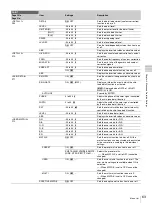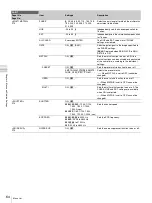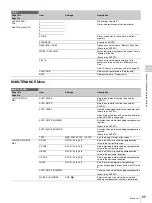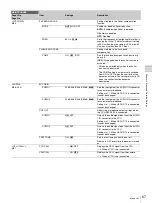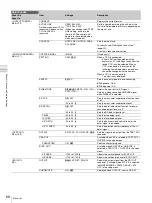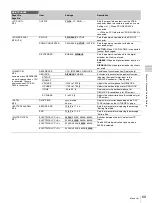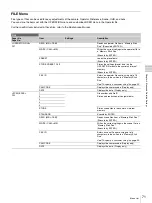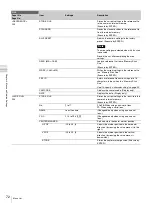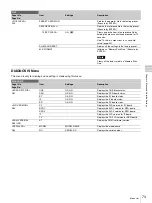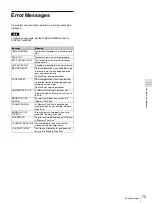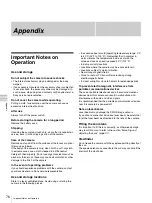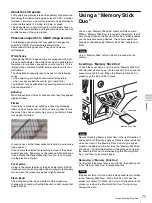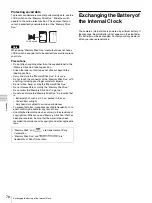
77
Using a “Memory Stick Duo”
A
ppen
dix
About the LCD panels
LCD panels are manufactured with extremely high-precision
technology that yields effective pixel rates of 99.99% or higher.
However, very rarely, one or more pixels may be permanently
dark or permanently lit in white, red, blue, or green.
This phenomenon is not a malfunction. Such pixels have no
effect on the recorded data, and the camera may be used with
confidence even if they are present.
Phenomena specific to CMOS image sensors
The following phenomena that may appear in images are
specific to CMOS (Complementary Metal Oxide
Semiconductor) image sensors. They do not indicate
malfunctions.
White flecks
Although the CMOS image sensors are produced with high-
precision technologies, fine white flecks may be generated on
the screen in rare cases, caused by cosmic rays, etc. This is
related to the principle of CMOS image sensors and is not a
malfunction.
The white flecks especially tend to be seen in the following
cases:
• when operating at a high environmental temperature
• when you have raised the master gain (sensitivity)
The problem may be alleviated by executing automatic black
balance adjustment.
Aliasing
When fine patterns, stripes, or lines are shot, they may appear
jagged or flicker.
Flicker
If recording is made under lighting produced by discharge
tubes, such as fluorescent, sodium, or mercury-vapor lamps,
the screen may flicker, colors may vary, or horizontal stripes
may appear distorted.
In such cases, set the flicker-reduction function to auto mode
.
If the frame rate selected for recording is close to the power-
supply frequency, flicker may not be reduced sufficiently even
if you activate the Flicker-Reduction function. In such cases,
use the electronic shutter.
Focal plane
Owing to the characteristics of the pickup elements (CMOS
image sensors) for reading video signals, subjects that quickly
move across the screen may appear slightly skewed.
Flash band
The luminance at the top and bottom of the screen may
change when shooting a flashlight beam or a light source that
quickly flashes.
Using a “Memory Stick
Duo”
You can use “Memory Stick Duo” media with the camera.
When a “Memory Stick Duo” is inserted in the camera, the file
data can be stored on the “Memory Stick Duo,” which enables
you to share data among devices. The camera operations
have been checked using “Memory Stick Duo” media up to
8GB.
Note
Only a “Memory Stick” of Duo size can be used with the
camera.
Inserting a “Memory Stick Duo”
1
Push the cover down, and
2
insert a “Memory Stick Duo”
with the label side facing up into the slot until it clicks and the
access lamp lights in red. When the “Memory Stick Duo” is
properly set, the lamp lights in green.
Note
Be sure to insert a “Memory Stick Duo” in the right direction. If
it does not fit into the slot properly or if there is some resistance
when you insert it, the “Memory Stick Duo” may be turned
around or upside-down. Do not force the “Memory Stick Duo”
into the slot. Confirm the direction of the notch and arrow on
the “Memory Stick Duo” before inserting the “Memory Stick
Duo,” and then try inserting it again.
Removing a “Memory Stick Duo”
Confirm that the access lamp is not lit in red, then lightly push
in the “Memory Stick Duo” to release the lock.
Note
If the access lamp is lit in red, data is being read from or written
to the “Memory Stick Duo.” At this time, do not shake the
product or subject it to shock. Do not turn off the power to the
product or remove the “Memory Stick Duo.” Doing so may
damage the data.
Label side
“Memory Stick Duo”
Summary of Contents for HXC-D70 Series
Page 83: ......

